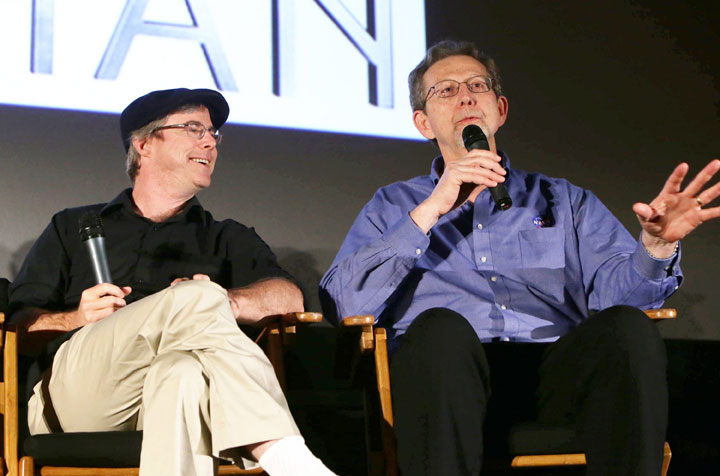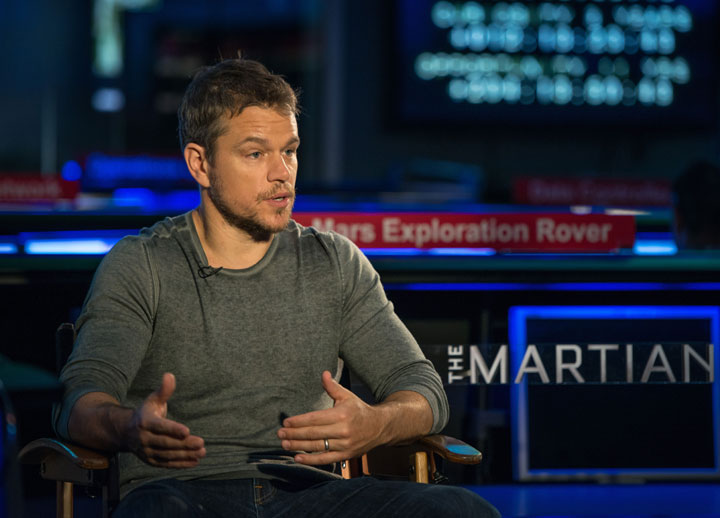TORONTO – If there’s anything the new movie The Martian illustrates, it’s that you don’t have to love science to appreciate good science fiction.

The new film premiered Friday night at the Toronto International Film Festival to rave reviews.
READ MORE: TIFF 2015: ‘The Martian’ premiere with Matt Damon, Jessica Chastain
While the story is deeply rooted in science, it’s a story about survival; of the will to keep going at all odds.
Mark Watney, the movie’s protagonist, is stranded on Mars after a dust storm separates him from his crew who are making their way to an escape vehicle. After trying to contact him with no response, his crew — and NASA — presume him dead.
Watney doesn’t just get to walk back to his habitat and wait for a rescue crew. Instead, Watney is faced with life-threatening difficulties: limited resources and no way to communicate with NASA to tell them that he is indeed alive. Over and over, Watney must overcome incredible odds to survive until he can contact home and even after that, he must wait until a rescue crew can be dispatched, something that seems unlikely before he runs out of resources.
What makes this movie — based on the best-selling book by Andy Weir — appealing is not only the story of survival but that it is based in real science.
NASA features prominently in the book. So it comes as no surprise that they were consulted for the movie.
From the mission to the red planet to the habitat used to the methods of communicating with Watney, NASA was used to ensure as much realism as possible was presented on screen.
Not only was Weir — who is a computer programmer — consulted, but director Ridley Scott and screenwriter Drew Goddard toured NASA’s Jet Propulsion Laboratory (JPL).
Jim Green, Director of NASA, said that he was asked to contact Scott to discuss the science of the movie.
“We spent about an hour and a half — he had a team of people there — and it wasn’t about ‘What does Jim Green know about the book?’ it was all about the science,” Green said. “We talked about radioisotopes, polymers — we talked about what the space suit would look like; we talked about how to create artificial gravity; we talked about all kinds of things.”
And the accuracy was important to author Weir who takes these things very seriously. Even the artificial gravity in the Hermes spacecraft.
Though that’s considerably less than Earth’s gravity — at 1 g — that meant they had some gravity. That made Weir happy.
WATCH: TIFF Red Carpet – The Martian: Andy Weir
Weir was heavily contacted for the scientific accuracy. At one point Scott had his people contact him to determine if Watney could be shown pouring hydrazine — a toxic and volatile chemical used in rocket propulsion — from one container into another on the surface of Mars.
“I was like, ‘Uhm, I don’t think so because hydrazine’s really volatile and the atmosphere on Mars is like practically a vacuum so it would boil off’ and they said, ‘Okay, so we won’t do it,’ and I was like, ‘Wow. I really mattered.”
Even the fact that NASA keeps duplicates of their spacecraft here on Earth to troubleshoot problems is real.
Goddard knew that to make the book appealing, he had to stay true to the book. And that included the science.
“So much of the movie is about the intelligence. If you took that out of it, I don’t know what it would be,” Goddard said.
And this isn’t a far-off future in the science fiction universe. In the book, it’s unknown when the events take place, yet it certainly feels like it could be in the near future. And the film version is no different.
“What The Martian captures for me is the realism. This is just around the corner,” said Green.
Now, there were some unrealistic bits of the book and movie.
“I’ve often had feedback from both NASA and JPL, that the most unrealistic thing in the book is the high degree of co-operation between NASA and JPL,” laughed Weir.
Another? The realism of their offices.
“Some people said, ‘Our offices aren’t nearly that nice,'” said Aditya Sood, one of the film’s producers as he laughed.
As for the possibility that a small feature of Mars might be named after Watney or Weir, Green said that’s a possibility.
At that, Weir smiled widely.
- Paul McCartney and John Lennon’s sons release 1st song together
- Quebec artists demand more provincial funding, say many struggle to ‘work creatively’
- Hot Docs left out of budget 2024 funds as financial woes cloud arts organization
- Calgary Opera’s production of ‘Das Rheingold’ features fantastic effects, costumes








Comments